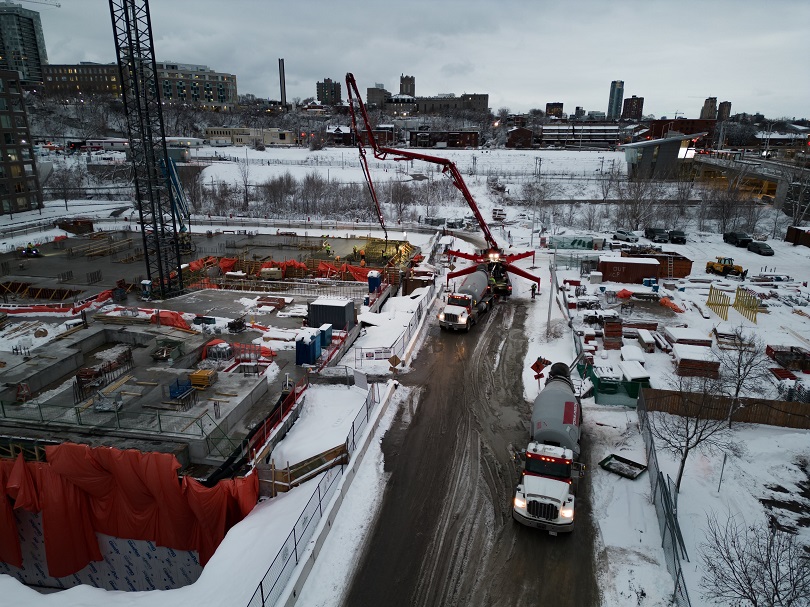As we are in the winter time, in this toolbox talk I would like to share with you few essential hazards and controls that we must follow throughout the cold season safety. The winter is here and as the colder months set in better and better, it’s mandatory for us to be vigilant and proactive in addressing the unique challenges that winter weather poses. Our focus will be on handling snow, ice, poor visibility, and low temperatures to ensure the well-being of every team member.

Cold Season Safety Controls
Snow and Ice Management:
Snow Removal: As part of the cold season safety one important action during the snowing days is to ensure prompt removal of snow from work areas, access points, and walkways to prevent slips, trips, and falls.
Salting and Sanding: Utilize salt or sand on icy surfaces to enhance traction and minimize the risk of accidents is another adequate control for cold season safety.
Equipment Inspection: Regularly inspect and maintain equipment to handle snow removal tasks efficiently and safely.
Safe Movement on Icy Surfaces:
Proper Footwear: As part of the cold season safety, the safety boots are playing their key role, wear appropriate footwear with slip-resistant soles to reduce the chances of slipping on icy surfaces.
Walk Cautiously: Take slow and deliberate steps, especially on icy patches, and use handrails when available.
Communicate Hazards: If you identify icy areas, communicate them to your team and mark them appropriately with warning signs.
Poor Visibility:
High-Visibility Clothing: Cold season safety controls are requiring also to wear high-visibility clothing to enhance visibility, especially in low light or adverse weather conditions.
Adequate Lighting: Ensure that work areas are well-lit to improve visibility during early mornings, late evenings, or cloudy days.
Communication: Use radios or other communication devices to stay connected, especially in areas with poor visibility.
Low Temperatures:
Layered Clothing: Dress in layers to stay warm and regulate body temperature. Ensure that extremities are adequately covered.
Breaks in Warm Areas: As part of our program for cold season safety, we have in place warm recreation spaces. You are encouraged to take regular breaks in warm areas to prevent cold-related illnesses like hypothermia and frostbite. Also you must keep your clothing dry and warm.
Hydration: Stay hydrated even in cold weather. Dehydration can still occur, so drink water regularly.
Cold Stress Awareness:
Recognize Symptoms: As part of cold season safety controls you must educate yourself and your team about the symptoms of cold stress, such as shivering, fatigue, confusion, and numbness.
Emergency Procedures: Follow and adhere strictly to the emergency procedures for dealing with cold-related illnesses and ensure everyone is familiar with them.
Equipment Operation in Cold Weather:
Equipment Warm-Up: Allow equipment to warm up adequately before operation to prevent malfunctions as part of the cold season safety program. Immediate start of any machinery may lead to breakdown or to injuries.
Fluid Checks: Regularly check and maintain fluids in equipment to ensure proper functioning in cold temperatures.
Safe Operation: Emphasize safe operating practices, considering the impact of cold weather on equipment performance.
Emergency Preparedness:
Emergency Kits: Have winter-specific emergency kits readily available, including blankets, warm clothing, first aid supplies, and communication devices.
Evacuation Plans: Follow the established evacuation plans, considering potential delays and challenges posed by winter conditions. The evacuation plans are posted in all safety boards of our site. Prior start your activity, familiarize yourself with the evacuation procedure, be aware on the exit ways and keep them clear at all the time.
As a final conclusion at the end of our toolbox talk, as we navigate the winter conditions on our construction site, it’s imperative that each one of us prioritizes safety. By addressing the challenges of snow, ice, poor visibility, and low temperatures, we can ensure a secure working environment for ourselves and our colleagues. Remember, vigilance and preparedness are key to a successful and safe winter construction season.
Thank you for your attention, and let’s work together to make this winter a safe and productive time on our construction site. If anyone has questions or concerns, please feel free to share them. Stay safe
Important
The toolbox talks must be always a dialog and not a monolog. You need to be sure that all your team has a clear understanding of the discussed topics. ALWAYS ASK FOR FEEDBACK – THIS WILL HELP and WILL PROVIDE VALUABLE INPUTS!
